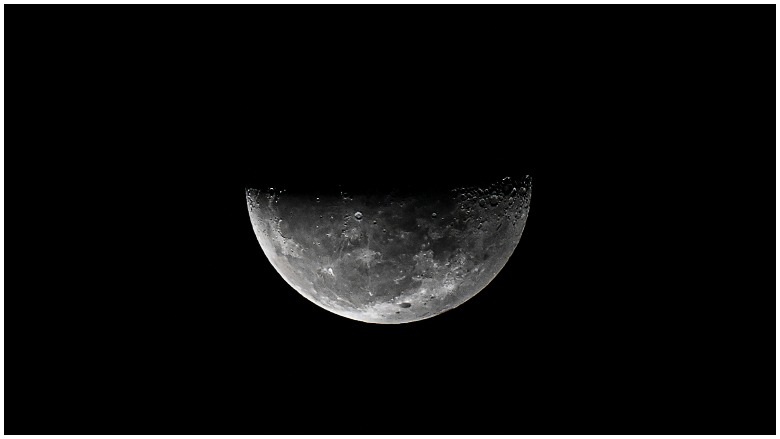
The National Aeronautics and Space Administration’s (NASA) recent discovery of water on the moon’s sunlit surface has sent astronomers and selenologists into a tizzy, as they consider future questions for exploration.
The water was discovered by NASA’s Stratospheric Observatory for Infrared Astronomy (SOFIA) and it was also discovered in areas that were previously thought impossible to hold water.
The discovery could have implications for the potential and presence of life on the moon.
Here’s What You Need to Know About the Water NASA Found
Water was first discovered on the moon after decades of research and satellite sweeps captured images of ice that had formed around the moon’s poles. When the moon’s south polar region was impacted in 2009, that kicked up debris and in that debris, the Lunar Crater Observation and Sensing Satellite (LCROSS) detected water, Space News reported. The Indian Chandrayaan-1 mission and NASA’s Infrared Telescope Facility had also previously found hydration in sunny areas of the lunar surface, according to NASA, yet scientists could not tell whether it was H20 or hydroxyl (Hydrogen-Oxygen) mix.
This more recent discovery, however, detected trace amounts of water molecules in the crater Clavius, which is in direct sunlight for the equivalent of 14 Earth days (one lunar day).
NASA announced the discovery via Twitter:
New moon with face Water molecules were found in Clavius Crater, one of the largest craters visible from Earth on the Moon! This discovery from our @SOFIAtelescope indicates that water may be distributed across the surface, & not limited to cold, shadowed places. More: https://go.nasa.gov/3kxS07l
Paul Hertz, the director of NASA’s Washington-headquartered Astrophysics Division, told Space News, “The expectation is that any water present on a sunlit surface of the moon would not survive the lunar day. This discovery reveals that water might be distributed across the lunar surface and not be limited to the cold shadowed places near the lunar poles.”
Hertz said the discovery confirmed what was long suspected about the presence of water, despite the surprise about water’s resilience on the moon. “We had indications that H2O – the familiar water we know – might be present on the sunlit side of the Moon,” Hertz said. “Now we know it is there. This discovery challenges our understanding of the lunar surface and raises intriguing questions about resources relevant for deep space exploration.”
What Could Water on the Moon Mean?
Water on the moon, and more specifically, water distributed all over the moon’s surface, as Hertz said this latest discovery implies, could bring scientists closer to discovering if life could exist on the moon or if life already exists on the moon. Water is one of the key ingredients of the formation of life, although theories of how water factors into the creation of life have varied over time.
Charles Darwin and Stanley Miller are credited with bringing the primordial soup theory into being, which implies that the necessary chemicals of life were already in the ocean and one day, spontaneously assembled to form the first molecules of life. In 2010, Science Daily reported on an article that suggested that “it was the Earth’s chemical energy, from hydrothermal vents on the ocean floor, which kick-started early life.”
Casey Honniball, a postdoctoral fellow at NASA’s Goddard Space Flight Center, said that the next question is figuring out how is the water being generated. “Without a thick atmosphere, water on the sunlit lunar surface should just be lost to space,” she said. “Yet somehow we’re seeing it. Something is generating the water, and something must be trapping it there.”
Honniball suggested to Space News that solar winds or micrometeorites could have brought the water. That is similar to the explanation Chris Welch, an astronautics and space systems expert at Kingston University London’s Faculty of Engineering, gave back in 2009. Welch, according to Science Daily, said, “Current thinking is that the water comes from particles in the solar wind which is emitted by, and streams away from, the sun continuously.”
“The water is thought to exist as a very fine film covering the particles of the lunar soil, or as groups of molecules, not as a liquid,” Welch said back in 2009. “You couldn’t drink it in its current form, but if extracted, then you certainly could. It has been suggested that one cubic metre of soil might provide one litre of water.”
NASA noted that scientists were still unable to determine whether the ice spotted by SOFIA was easily accessible. More definitive answers will require further exploration and scientists hope to discover more through its Artemis program, which has plans to launch two more people to the moon in 2024.
READ NEXT: COVID-19 Symptoms: Here’s What You Need to Know About Pneumonia